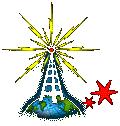
<< radio home
<< index
by disinfoniacs #69 & #1
>>>>

Today, connecting a radio to a computer can greatly expand the possibilities of radio. For digital mode operation, three connections must be established between the computer and the radio, namely receive audio, transmit audio, and transmitter keying. The receive audio connection allows the computer to hear what's being sent on the radio through the computer's line in to the transceiver speaker connector. The transmit audio connection gives the computer the ability to send digital mode signals through the radio. This is done by connecting the computer's speaker or line out to the radio's mic circuit. The transmitter keying, commonly referred to as the push-to-talk connection, allows the radio to switch between receiving and transmitting.
For the transmission of FT8 digital communications via AFSK, a transceiver and a digital hot spot must be utilized. A digital hot spot is a device that enables communication using digital voice or data systems over the internet, allowing a small device like a Raspberry Pi to act as a repeater for these modes while at home.
If you are interested in operating using the CW (Continuous Wave) mode, you may use an electronic keyer. This device facilitates the manual sending of Morse code, assisting the user in this mode of operation.
As the digital landscape of amateur radio evolves, two of the most popular modes of digital mobile radio (DMR) and Digital Smart Technologies for Amateur Radio (D-STAR) are becoming increasingly prevalent among enthusiasts.
A DMR code plug, in the context of amateur radio, is a specific configuration file that contains all the necessary access information for the radio to communicate with DMR repeaters and talkgroups. It is essential for the transceiver to support DMR to utilize this feature.
Similarly, in order to operate on the D-STAR digital mode, the transceiver must have the user's call sign programmed in before transmission. This registration of the call sign on the D-STAR system is a one-time requirement for all users of this mode.
It is common for DMR or D-STAR users to operate their transceivers through a digital mode hot spot. This allows for communication using digital voice or data systems over the internet, making it possible to use a small device like a Raspberry Pi as a repeater for these modes while at home.
Take study test for T4 on hamstudy.org until you consistently score at least 85%.
<< previous lesson | next lesson >>
---
<< radio home
<< index
